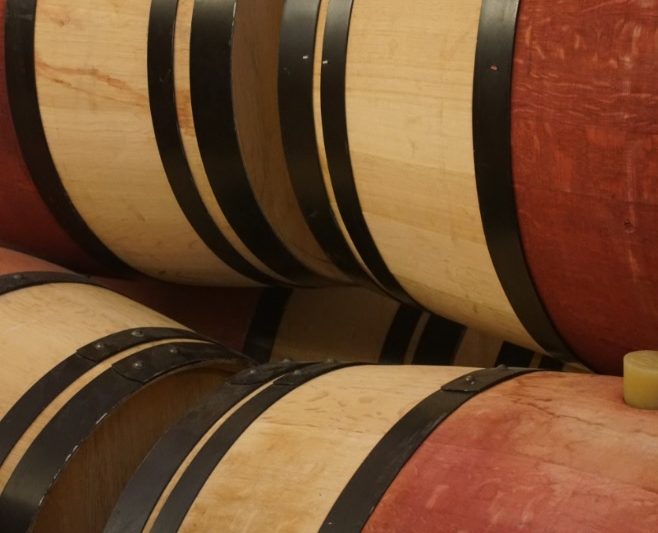 This year, in 2017, the production will decrease by 18% because of climate fluctuations.
This year, in 2017, the production will decrease by 18% because of climate fluctuations.
The harvest volume in the Bordeaux and Jura region will drop by half.
The wine harvests that have begun two or even three weeks earlier than usual will experience historic record lows this year. “France has not experienced such low harvests since 1945,” so Jérôme Despey, president of the council specialised in wine at the National Institute FranceAgriMer on Friday. The ten days of frost in April and the general drought are responsible for the low harvests.
Now, the French Ministry of Agriculture is expecting harvests of about 37.2 million hectolitres. In the 2016 report, already the most moderate one for 30 years, they were still predicting 18% more. And that is exactly the problem. The low harvests of the last few years are weighing heavily on the quantity available for export. This is a historic highlight in the French trade balance.
The only three regions experiencing an increase in their harvest volume are the Val de Loire, Burgundy and Champagne. In Champagne, the harvest will be slightly better than in 2016, but with 9% against the five-year average. In the Val de Loire region, which has suffered more from the drought than from the frost, the vineyard is healthy and the production is up 8%. The region Burgundy-Beaujolais will record an increase in production, too (+12%), after having experienced a very unprofitable 2016.
A high-quality vintage for the millesim 2017
The harvests of all other regions are decreasing. The Jura region is experiencing the highest record low. It has to accept a production that is twice as low as it was the year before, with a total of 40,000 hectolitres. In the Bordeaux region, which extremely suffered from frost in spring, the harvest will decrease by 50% compared to 2016. The Sud-Ouest region, which had to deal with frost in April and hail at the beginning of summer, has to expect a drop of 18%. For the Sud-Est region (Rhone valley, Var, Vaucluse, Gard, Hérault), the ministry announced a decrease between 20 and 30% and about 30% for the Alsace region. In Charente (the region of cognac), the production will not exceed the 5.4 million hectolitres; that are 35% less than the five-year average. In the Midi-Pyrénées region, the decrease is at environ 18% within a year. Against the report of 2016, a decrease between 8 and 10% is announced for the great region Languedoc-Roussillon. According to Jérôme Despey, winemaker in that region, they have not seen any rain drop at all for two months.
The drought is a phenomenon with severe consequences, but it has its advantages, too. The grapes are free of all mould problems that are caused by humidity. There is neither powdery nor downy mildew, so there are no pesticides used to act against these two plagues. According to the institute FranceAgriMer, the quantity of the vintage is very low, but for that, the quality is better than ever before.
The price of the 2017’s wines could compensate for the production losses ?
So, to imagine an increase in wine prices for consumers, there is only one possibility, especially because the wineries’ turnover is heavily influenced by the harvest losses. For Jérôme Despey, it is like this:” There is a considerable backlog regarding the price cuts which were noticed in the last few years. We will be extremely vigilant concerning this matter, but those elements will not compensate for the production losses.”
The French organisation FNSEA, where Jérôme Despey is also the secretary general, has already demanded compensation from the French Ministry of Agriculture. Just about 20% of French winemakers are insured against losses caused by climate fluctuations. That is especially because of the premiums demanded by insurances and because of the regulatory, often very complicated questions, so Jérôme Despey. An approach that might have to be changed in the future. (selon Marie-Josée Cougard des Les Echos)


